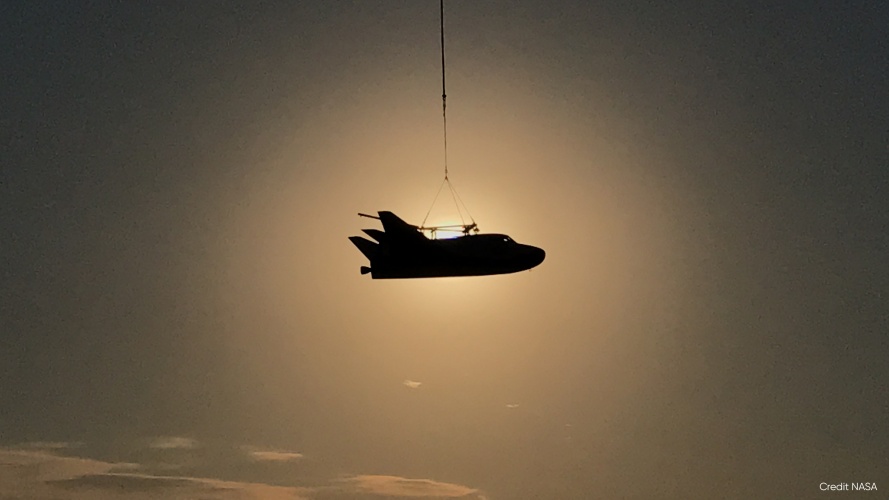" target="_blank" rel="noopener">Designed primarily to ferry cargo to and from the International Space Station (ISS), Dream Chaser will be capable of launch on Atlas V and Ariane 5 rockets. The spacecraft, which resembles a miniature space shuttle, can then travel autonomously under its own power once in orbit, docking with the ISS. After re-entering the Earth’s atmosphere, Dream Chaser glides to the ground to make a conventional runway landing. According to SNC, each vehicle could be reused more than 15 times.
The latest step in the test programme saw the Dream Chaser carried to flight test altitude by a Chinook helicopter. It remained attached to the chopper throughout, but the flight allowed the SNC ground team to send commands to Dream Chaser, monitor performance and collect critical data ahead of the craft’s first free flight test.
“We are very pleased with results from the captive carry test, and everything we have seen points to a successful test with useful data for the next round of testing,” said Lee “Bru” Archambault, SNC’s director of flight operations for the Dream Chaser programme.

A second captive carry test is planned for the coming months, with the first free flight test due to take place before the end of 2017. While these tests will focus on uncrewed flights, a second variant of Dream Chaser is under development for crewed missions. Despite being just 9m long, the vehicle will be able to carry up to seven astronauts, the same number as the Space Shuttle.
“This test is another indication the Dream Chaser is on track for meeting our key milestones on the way to orbital spaceflight,” said Steve Lindsey, vice president of Space Exploration Systems for SNC.
“We are excited to move through the remaining ground and flight testing to help inform our CRS2 (Commercial Resupply Services 2) orbital vehicle design and upcoming production.”




Project to investigate hybrid approach to titanium manufacturing
What is this a hybrid of? Superplastic forming tends to be performed slowly as otherwise the behaviour is the hot creep that typifies hot...